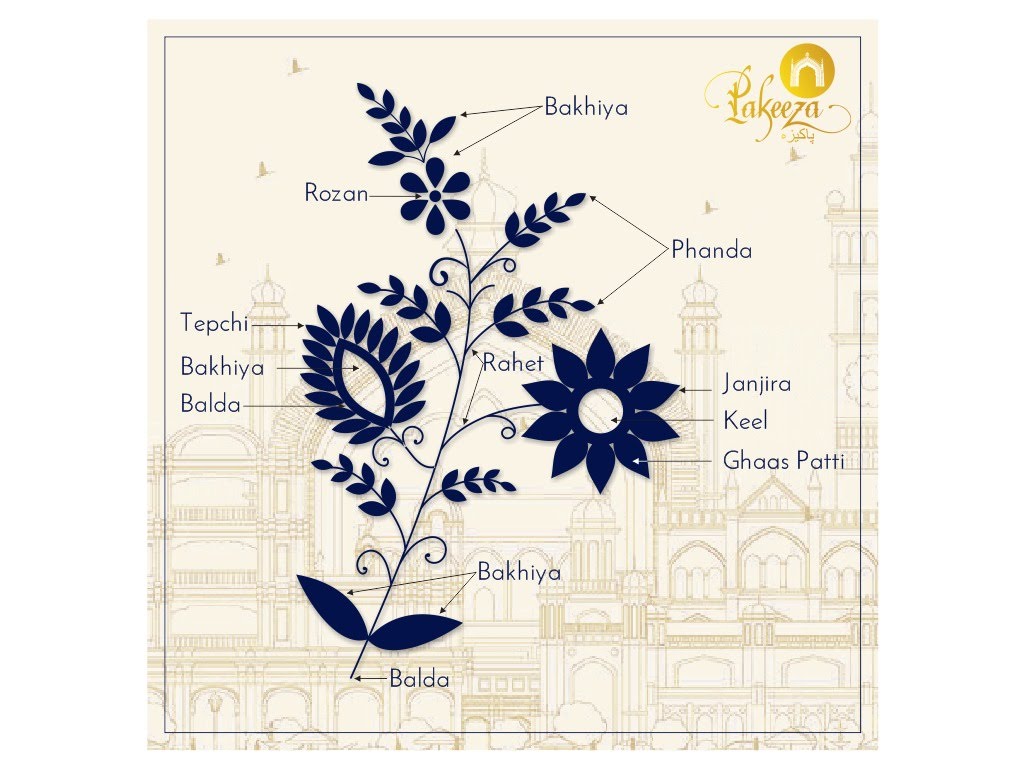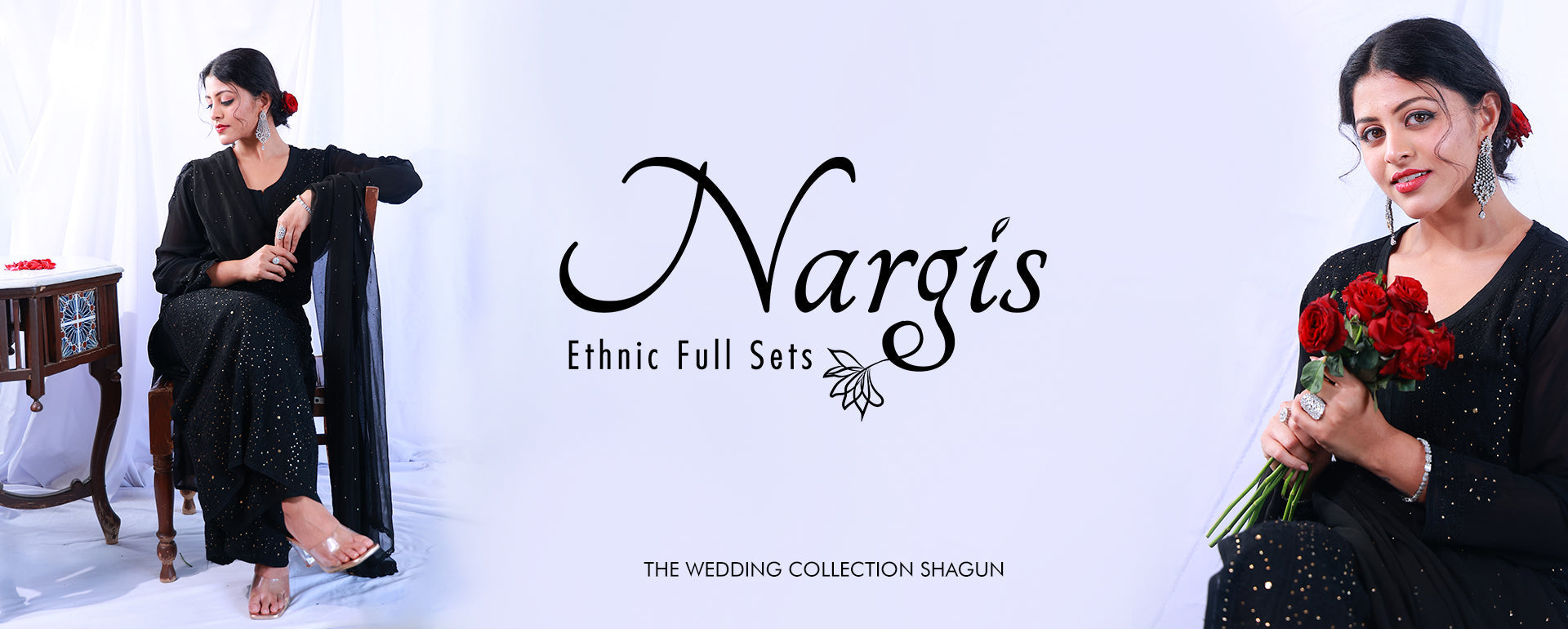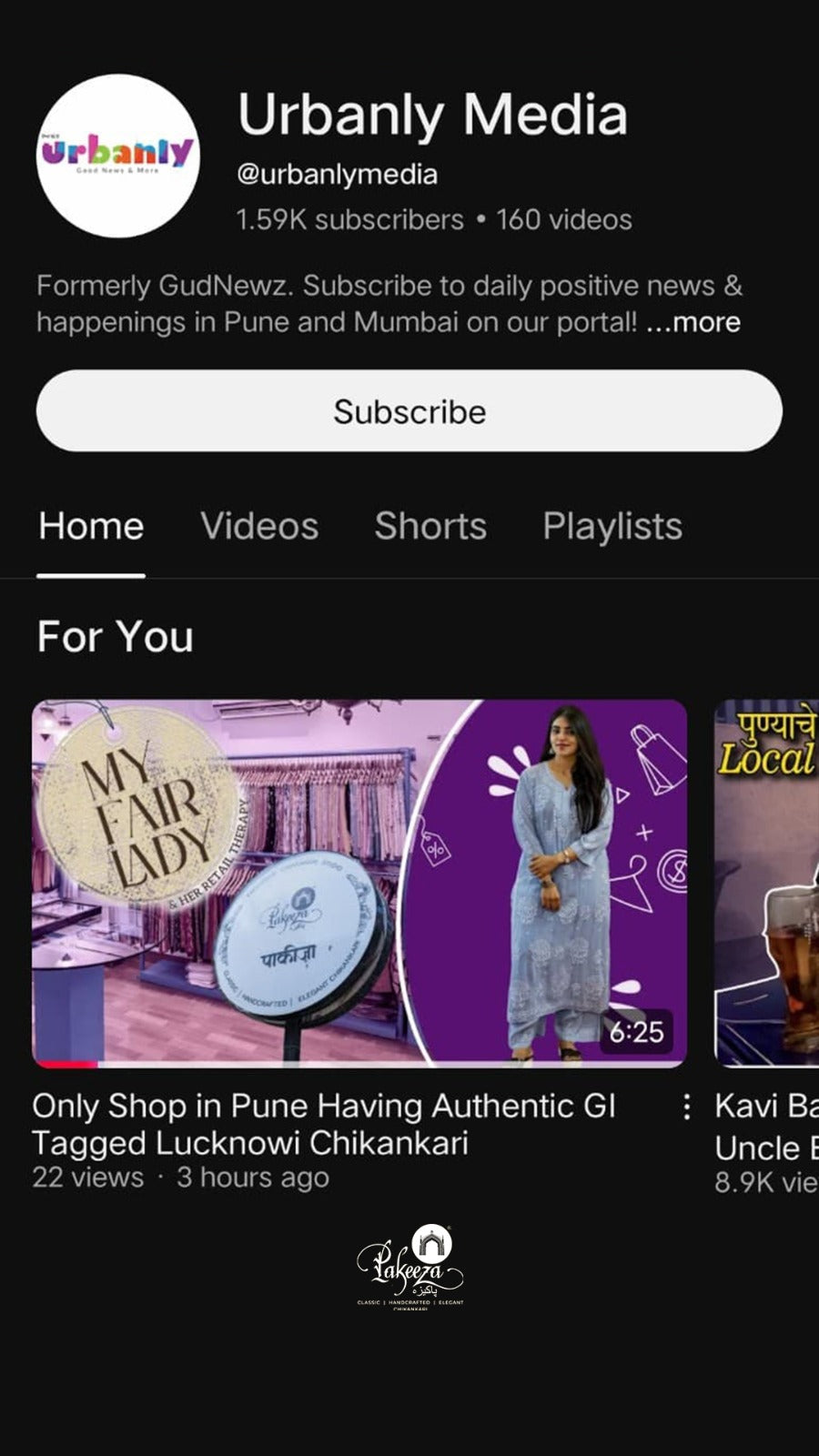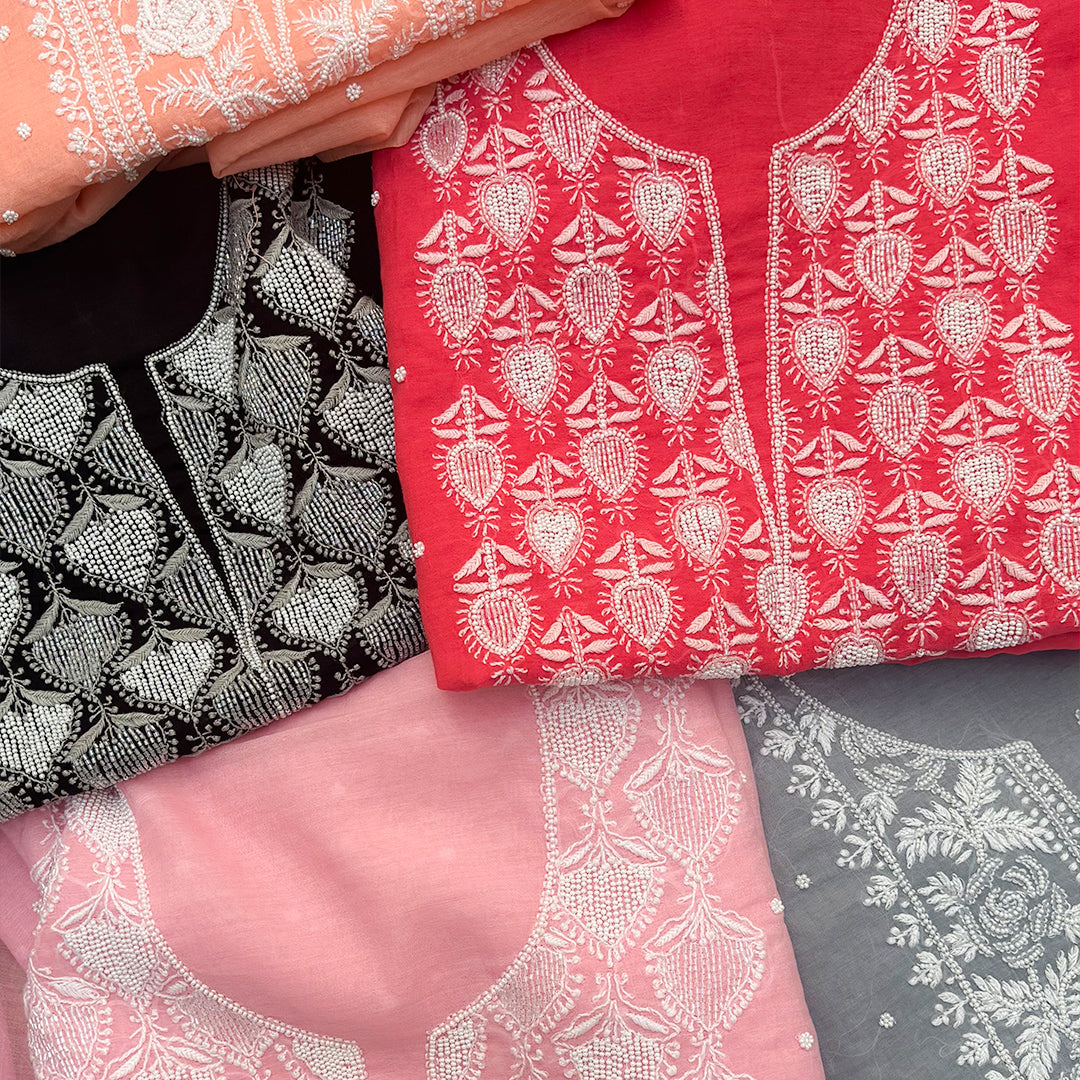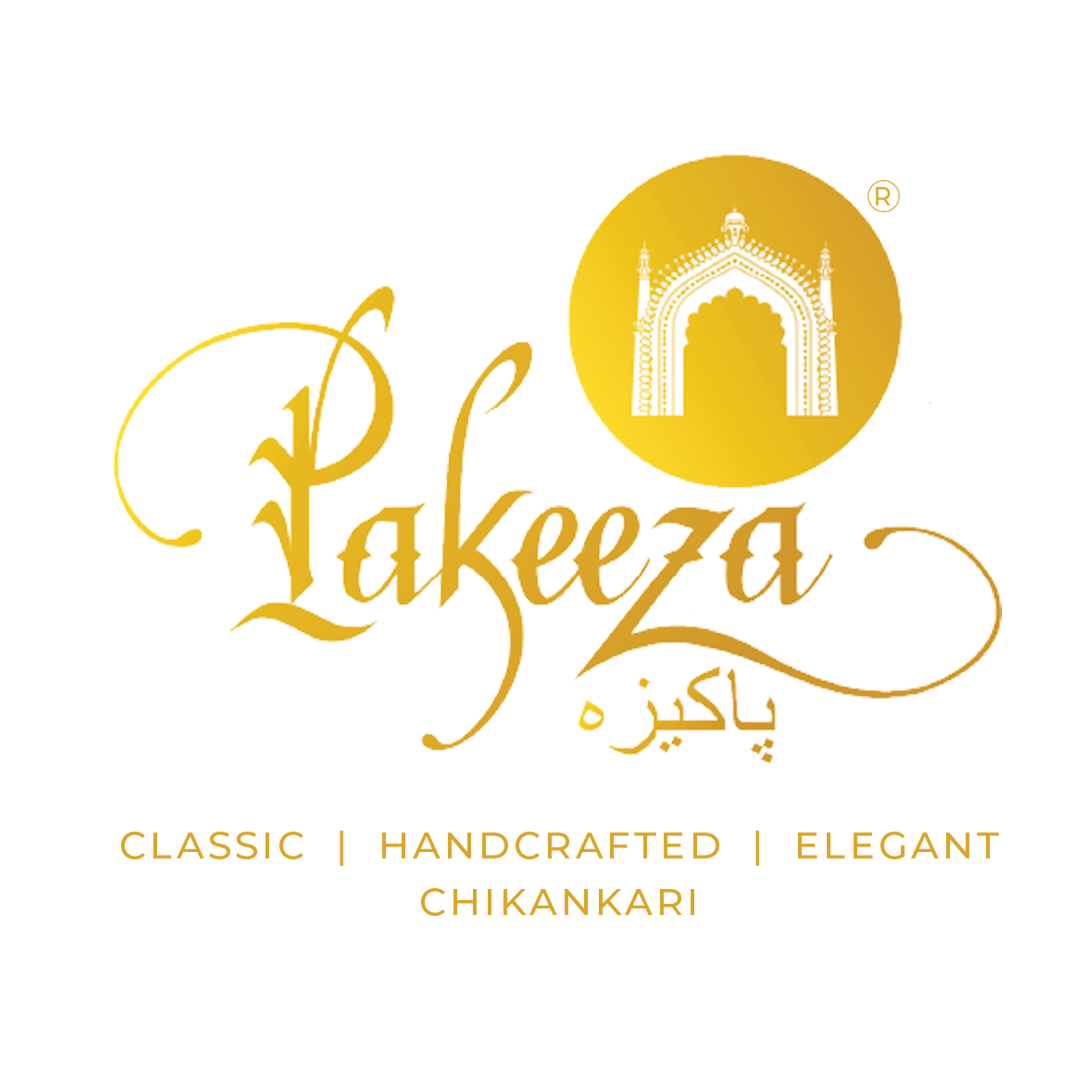The Art of Chikankari: Types, Styles & The Making Process
Chikankari, the timeless hand embroidery from Lucknow, is more than just a craft, it's a legacy passed down through generations. With its intricate threadwork and elegant motifs, Chikankari has captured the hearts of fashion lovers across the world. But what truly makes this embroidery stand out are the various styles, techniques, and the love poured into every stitch. Let's dive into the different types of Chikankari, how they’re crafted, and what materials bring them to life.
Types of Chikankari Embroidery
Chikankari is not limited to a single stitch or pattern — it encompasses a variety of techniques, each adding a unique texture and aesthetic:
Tepchi
A long-running or darning stitch worked with six strands on the right side of the fabric.
Often used as an outline or to create borders.
Bakhiya (Shadow Work)
Done on the wrong side of the fabric, so the thread shows through to the front, creating a shadow-like effect.
Comes in two types: Ulti Bakhiya (reverse) and Seedhi Bakhiya (straight).
Phanda
Small knot-like stitch often used to create flower buds and small dots.
Similar to French knots but tighter and more delicate.
Murri
A rice-grain shaped stitch used primarily for flower petals and buds.
Involves fine detailing and is considered one of the most intricate Chikankari stitches.
Keel Kangan
A variation of the Phanda, often used to design floral motifs, particularly petals and leaves.
Jali Work
A delicate net-like pattern created without cutting the fabric, using pulled-thread technique.
Extremely fine and requires high skill and precision.
Hool
A detached eyelet stitch used to create floral centers and accents.
Gives a slightly raised effect.
How Chikankari Is Made: Step-by-Step Process
Crafting a piece of Chikankari is a labor of love that involves multiple stages:
Designing the Pattern
Traditional motifs (like paisleys, florals, and creepers) are drawn by artists on tracing sheets.
These are inspired by Mughal art and nature.
Block Printing
Wooden blocks are dipped in washable ink and stamped on the fabric to guide the embroidery.
This step is critical and done by skilled block printers.
Embroidery
Artisans use a fine needle and cotton or silk thread to hand-embroider over the printed design.
Each artisan usually specializes in specific stitches.
Washing and Finishing
Once embroidery is complete, the fabric is washed to remove ink markings and any dirt.
The piece is then starched and ironed for the final look.
Materials & Fabrics Used in Chikankari
Threads:
Traditionally white cotton threads were used.
Now available in colored threads, silk threads, and even metallic zari.
Fabrics:
Muslin – The original base fabric used during the Mughal era.
Cotton – Lightweight and breathable, ideal for casual wear.
Georgette – Offers a soft drape and is commonly used for sarees and suits.
Chiffon – Adds a delicate and feminine feel.
Silk – Adds richness and is perfect for festive or bridal wear.
Organza & Modal – Modern picks that blend tradition with trend.
Final Thoughts
Chikankari is not just embroidery, it’s a soulful blend of art, heritage, and patience. Each piece carries the essence of its artisan and the timeless elegance of tradition. Whether it’s a breezy kurta, a regal saree, or a contemporary co-ord set, Chikankari continues to evolve while staying rooted in its cultural grace.
Next time you wear a Chikankari outfit, remember, it’s not just fashion. It’s history, skill, and craftsmanship stitched into every thread.

